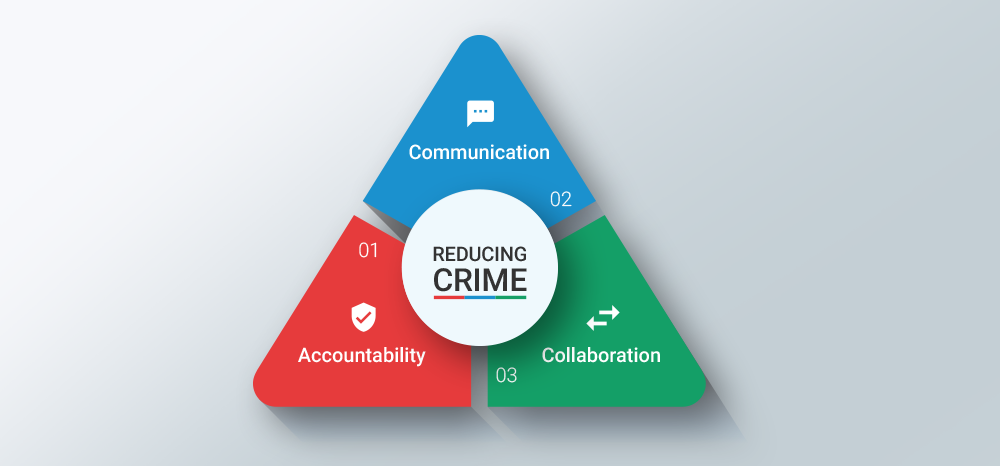There are several core challenges that often stand between law enforcement organizations and their quest to improve crime reduction efforts in their communities. Selecting the right strategy (or even blend of strategies) that will address their unique problems is a major hurdle to overcome. Likewise, staffing, culture, and measuring execution in a meaningful and long-term way are also common obstacles.
While it’s certainly true that there is no “one size fits all” approach to crime reduction, there are a few core concepts that can address many of these obstacles, and help an agency accomplish its goals simultaneously.
Based on our experience, countless conversations with your peers, and case studies, we have fast-tracked the top Three Critical Keys to Success when it comes to reducing crime:
- Accountability
- Communication
- Collaboration
It All Begins with Accountability
One of the most important factors required to reduce crime has to do with adopting a true accountability mindset for your proactive policing efforts. The problem is that in many agencies, accountability is something that “rolls downhill” – meaning that responsibilities are often pushed down to the people who are working beneath those they were given to. A Chief gives an assignment to a Commander, who assigns it to a Captain, who delegates it to a Lieutenant, etc.
Instead, accountability needs to be shared across all levels of the organization, not just the last person it was delegated to. More than that, a successful crime reduction strategy depends on accountability being assigned based on the complexity of the crime. The more significant the crime, the higher the rank of the officer to which it is assigned. These are two critical perspectives that any agency of any size can easily adopt by sharing accountability and assigning by complexity.
Communication is King
Equally important is the concept of communication – something that most agencies could stand to improve in at least some ways. If your agency wants to focus on robberies and burglaries, for example, this needs to be communicated to everyone. This communication extends to the officers out on patrol as well as the crime analysts who are focused on data collection and the investigators who need to know what their priorities needs to be in a given day.
Likewise, actionable data must be communicated if crime reduction techniques are to be successful. Everyone in an agency needs to know what is happening, why it’s happening, and they need essential community information to gain critical perspectives on the people and groups they’re dealing with.
Remember, knowing what to communicate is often just as essential as knowing how to communicate within your agency.
The Power of Collaboration
Finally, we arrive at collaboration – or in other words, the realization that decision makers within an organization need the most accurate, actionable insights to make the best decisions possible at all times. Key data needs to be top of mind, represented visually and presented in a way that can be easily organized, searched and accessed.
Equally important is the realization that decision makers exist at every level in an agency – not just at the top. Once all of the decision makers have the knowledge they need, they’ll be in a better position to prioritize their time and respond in the right way to their own unique piece of the crime reduction puzzle.
If you’d like to find out more information about the Three Critical Keys to Success in terms of reducing crime, download our new eBook: “The Most Powerful Guide to Reducing Crime – 3 Keys to Success.”

